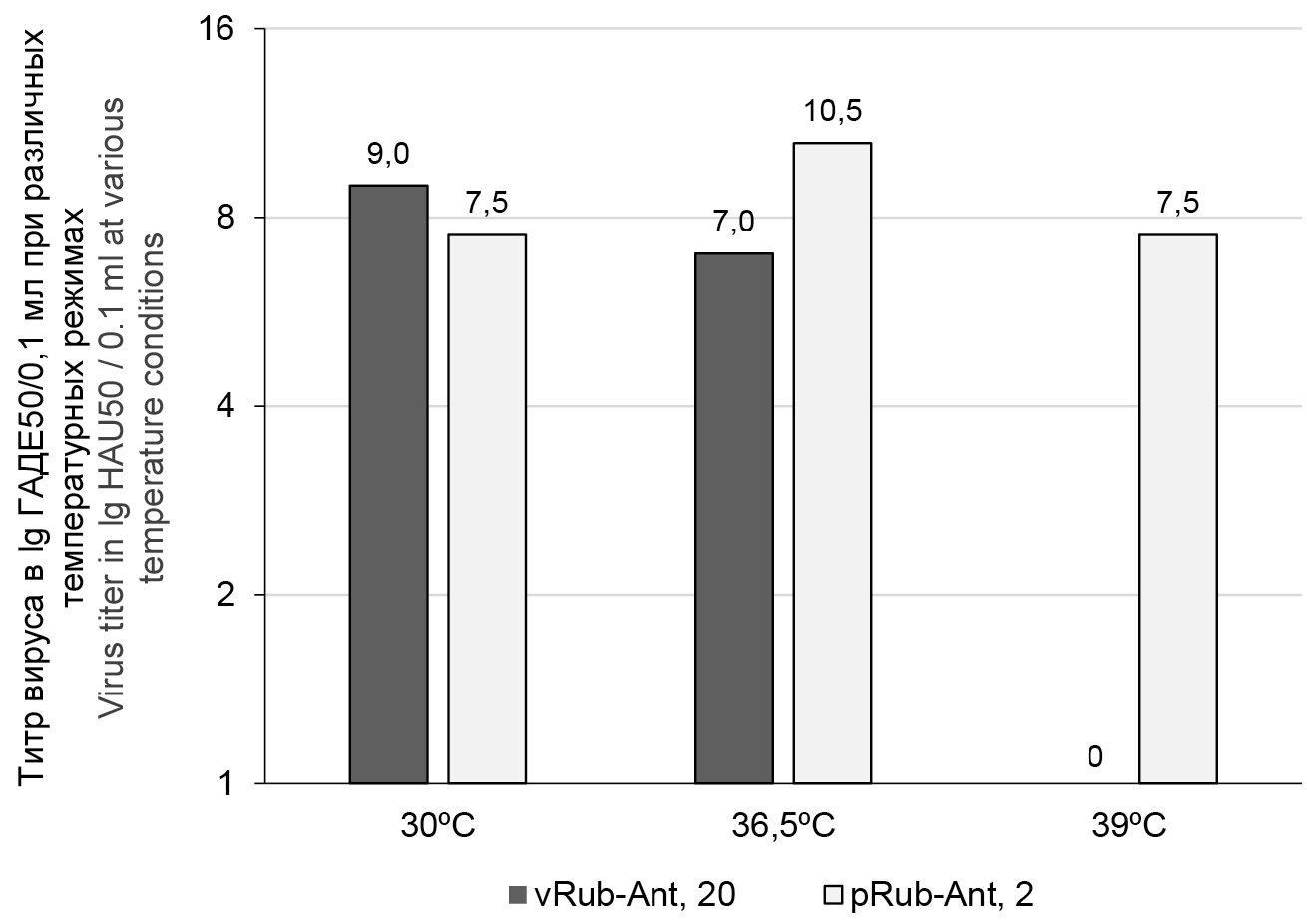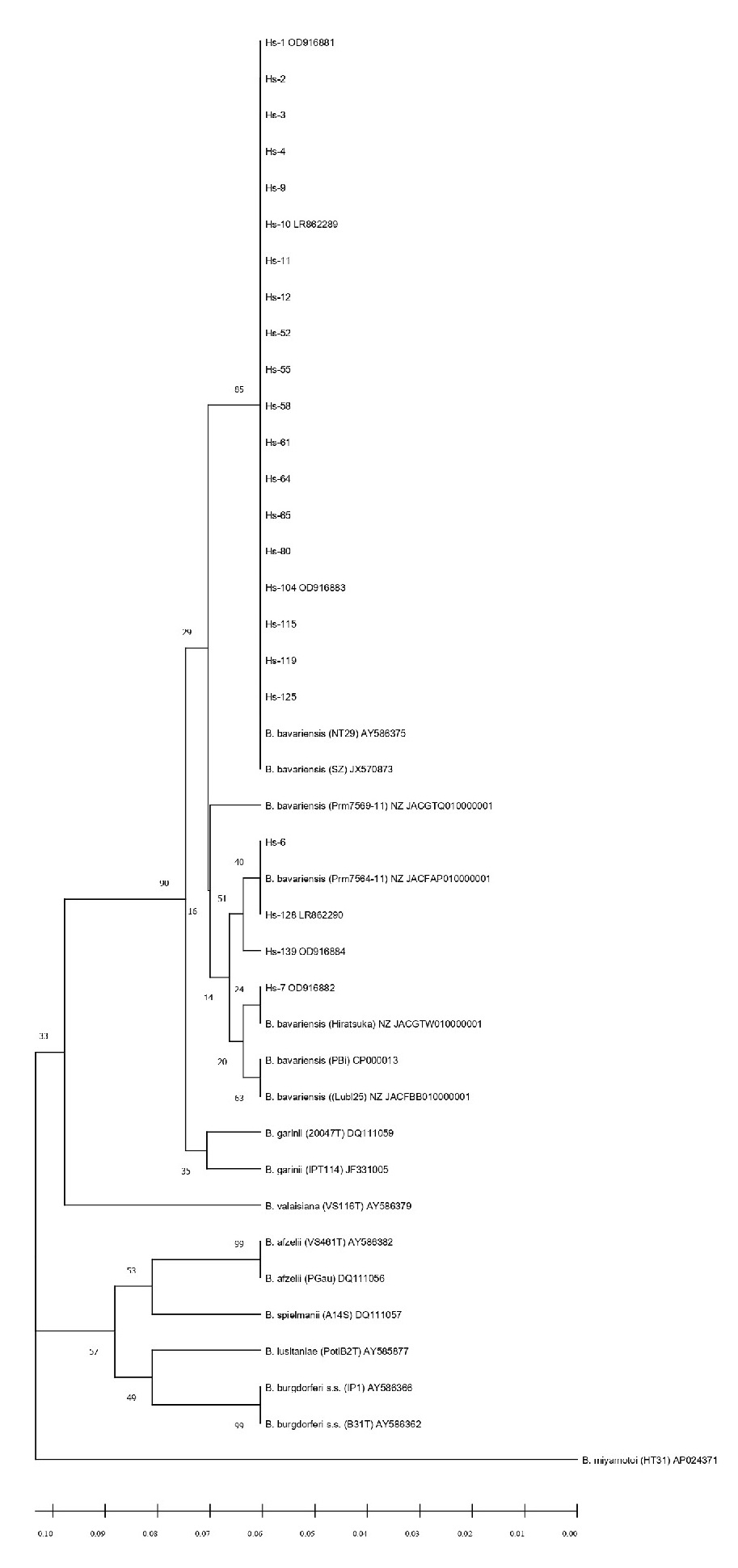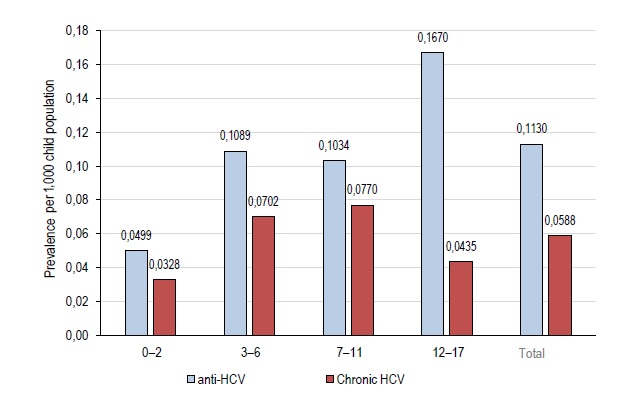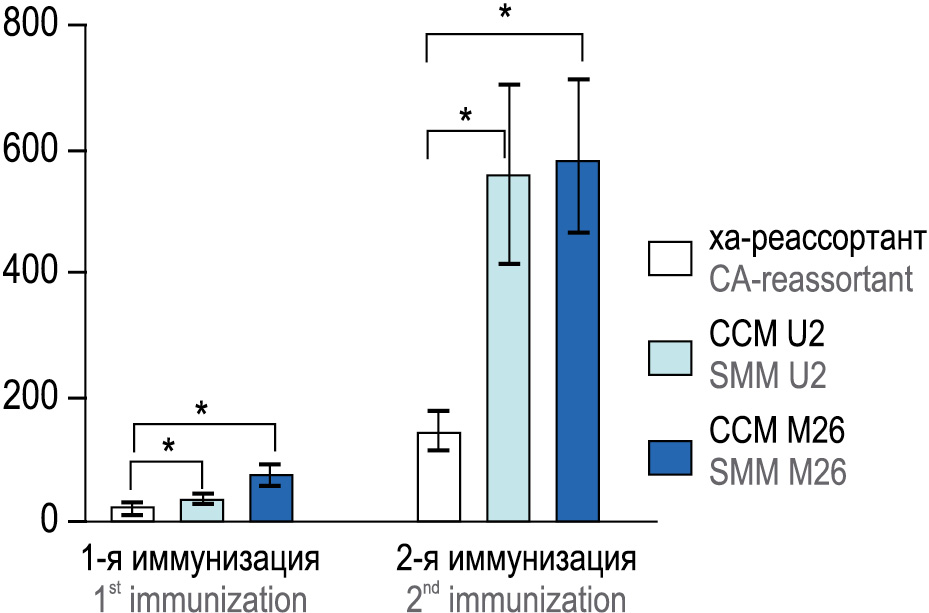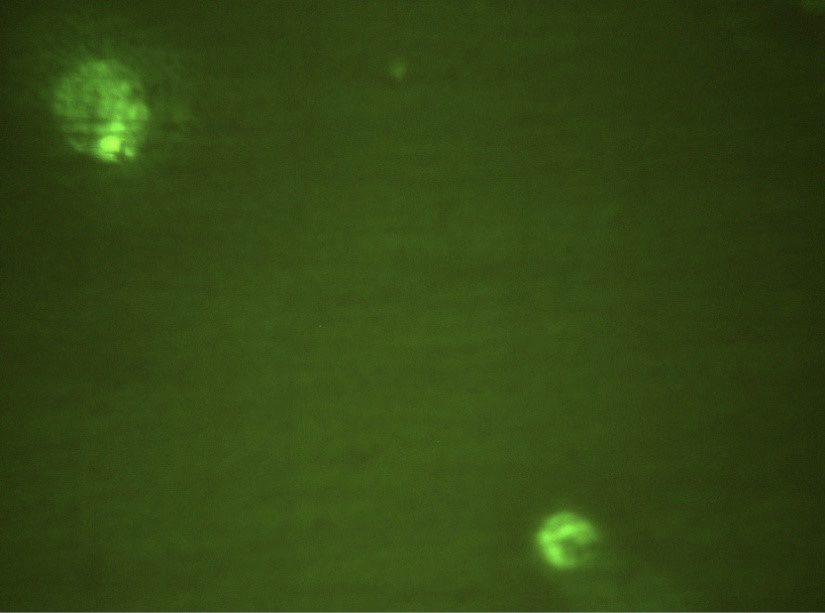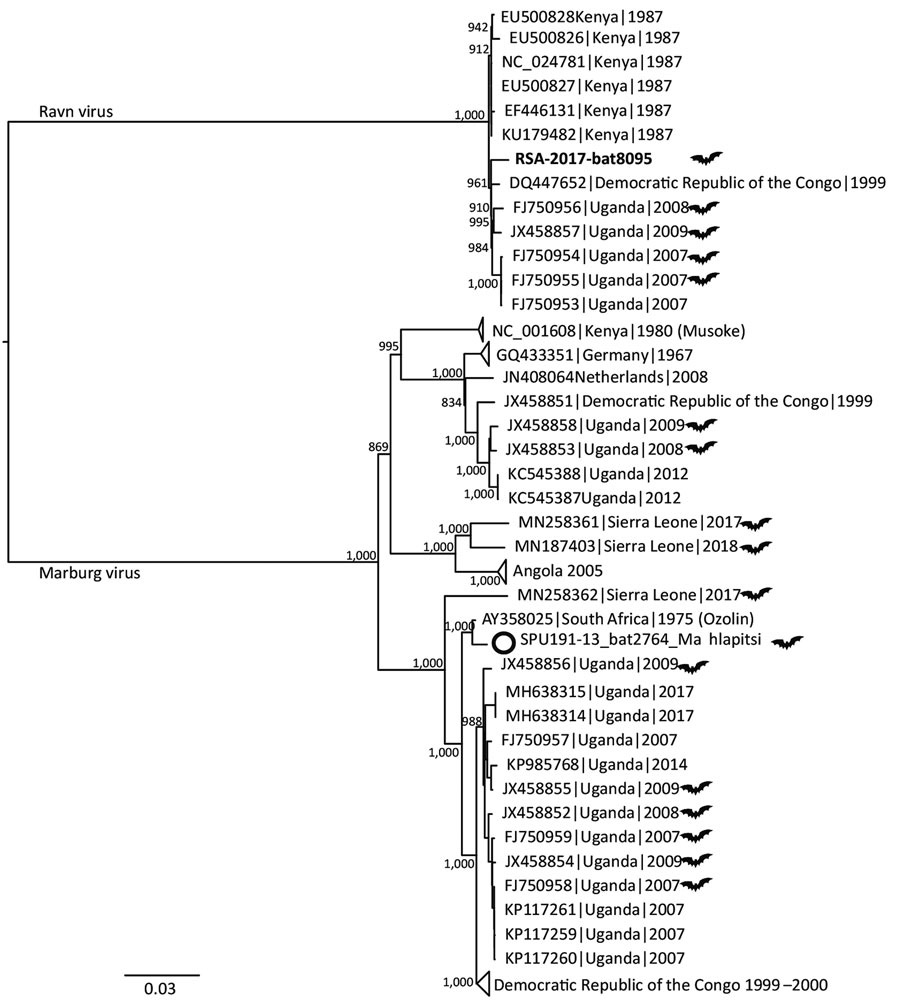Vol 99, No 5 (2022)
- Year: 2022
- Published: 07.12.2022
- Articles: 11
- URL: https://microbiol.crie.ru/jour/issue/view/52
Full Issue
ORIGINAL RESEARCHES
Biological properties of domestic strain vRub-Ant of rubella virus
Abstract
Introduction. Rubella is a mild infectious disease affecting mainly children and is caused by the rubella virus, part of the Matonoviridae family, genus Rubivirus. Rubella causes congenital rubella syndrome (CRS) and is the main cause of developmental abnormalities, especially blindness and deafness.
There is no specific treatment for rubella and CRS. In order to avoid possible complications from rubella infection, a live attenuated rubella vaccine based on the foreign strain of Wistar RA 27/3 rubella virus is used. However, the actual, more effective and preferred vaccine strain the rubella virus for the Russian Federation is considered to be a viral strain of rubella circulating on its territory.
The aim of the study was to study the biological properties of the developed domestic cold-adapted strain vRub-Ant circulating in the territory of the Russian Federation.
Materials and methods. Following cell cultures were used in the study — human embryo lung diploid cell strain LECH-3, transferable cell line from embryonic kidney cells of green monkeys Vero CCL-81 and Vero ECC, human mesenchymal stem cells, human peripheral blood mononuclear cells (PBMC). Cell cultures were grown on a DMEM/F12 nutrient medium with the addition of 5% fetal bovine serum. Swabs from the pharynx and nasal passages from a child with rubella were used as clinical virus-containing material. Monoclonal anti-idiotypic antibodies m(anti-ID)Ab were used to assess the expression level of alpha/beta and gamma interferon receptors (α/β and γIFN-R)Ab, imitating the biological effects of alpha/beta and gamma interferons (α/β and γIFN) of humans. The cultural, virological, immunochemical and serological research methods were applied in the study.
Results. Attenuation of the vRub-Ant clinical isolate of rubella virus was carried out for 20 consecutive passages on LECH-3 diploid cells at a reduced temperature of 30°C. The main biological markers of attenuation were determined to be ts and ca phenotypes. The avirulence of the attenuated viral strain (att-phenotype) was assessed by the level of expression of α/β and γIFN-R. A lower level of α/β and γIFN-R expression was found on the membranes of human PBMC induced by the vaccine strain vRub-Ant in comparison with the parent wild variant of the rubella virus. This trait,the att phenotype, is characteristic of attenuated viral strains. It has been shown that the vaccine strain vRub-Ant has lost neurotropism and was unable to bind to the membrane receptors of the brain (MRB) of guinea pig embryos, unlike its parent rubella virus strain. The high immunogenicity of the domestic cold-adapted strain vRub-Ant was confirmed by high titers of neutralizing rubella antibodies observed in guinea pigs immunized subcutaneously with one vaccination dose of the virus.
Conclusion. A domestic attenuated vaccine strain vRub-Ant of the rubella virus that has the main biological markers of attenuation (ts-ca and att phenotypes) has been developed. The vaccine strain vRub-Ant induces a high levels of neutralizing antibodies in guinea pigs following the immunization with a single vaccination dose of the vaccine. The viral strain vRub-Ant has lost its tropism to the MRB of guinea pig embryos, unlike its parent variant.
 505-513
505-513


Optimized multilocus sequence analysis for laboratory identification of pathogens of ixodid tick-borne borreliosis
Abstract
Introduction. The most common etiological agents of ixodid tick-borne borreliosis (ITBB) in Russia are Borrelia garinii, B. afzelii, B. bavariensis. Multilocus sequence typing and multilocus sequence analysis (MLSA) have been used in recent studies for Borrelia species identification. The results of using the MLSA scheme for identification of pathogens causing erythemic forms of ITBB have been presented earlier.
The purpose of the study was to explore the possibility of MLSA optimization for laboratory identification of ITBB pathogens. Objectives: comparative analysis of nucleotide sequences of 6 conserved genes (rrs, hbb, fla, groEL, recA, ospA) and the rrfA-rrlB intergenic spacer, which are recommended by the MLSA protocol; identification of the minimum set of genes, the concatenated sequences of which are essential for species identification of Borrelia isolates.
Materials and methods. The sequences of the above loci of 23 reference isolates collected from patients with ITBB and assigned, using MLSA, to B. bavariensis were compared with the sequences of similar genes of other Borrelia species available in international databases. The UPGMA method was used to build and analyze dendrograms based on the obtained data.
Results. The sequences of ospA gene loci of reference species demonstrated the greatest difference (not less than 8.5%) from the sequences of the above gene in other analyzed species of Borrelia; approximately similar species-related differences (not less than 6.7%) were demonstrated by the comparison of recA gene sequences. The sequences of the identified variants of these two genes in B. bavariensis differed from the sequences of the similar genes in the most closely related species — B. garinii. The dendrogram of the concatenated nucleotide sequences of recA and ospA genes demonstrated that it was totally consistent with the results of identification of the isolates based on the MLSA protocol.
Conclusion. The optimized approach to MLSA of the B. burgdorferi sensu lato group suggests that species identification should be based on the concatenated analysis of loci of only two genes (recA and ospA) out of 7 loci recommended by the MLSA protocol.
 514-524
514-524


Hepatitis C virus care cascade for children in Moscow Region
Abstract
Background. Children and adolescents with infection caused by the hepatitis C virus (HCV) have not been given sufficient attention due to mild forms of HCV and delays in approval of antiviral treatment regimens. Omissions in the studies of pediatric cohorts and shortcomings of management policies aimed at children should be eliminated by improving screening coverage and access to treatment.
The aim of the study was to present the results of the cascade sequence of diagnostic testing, care and treatment of children with HCV in the Moscow Region (MR).
Materials and methods. The study included all HCV seropositive children of MR (n = 175), who underwent screening tests, and it did not include patients living with HIV/HCV coinfection. Children were observed from 2017 to 2022. The HCV RNA was detected in 164 children and HCV genotypes were identified in 99 children. The stage of liver fibrosis was assessed in 73 children by transient elastography and by FIB-4 index calculation.
Results. In MR, 93.7% of seropositive children were tested for HCV RNA; 71.2% of adolescents over 12 years of age received treatment. The prevalence of HCV seropositivity was estimated at 0.113/1,000 children population; the prevalence of chronic HCV infection was at least 0.059/1,000. The dominant HCV subtypes were GT 1b (43.4% [the 95% confidence interval, 33.5–53.8%]), GT 3a (23.2% [15.3–32.8%]) and GT 3a/3b (20.2% [12.8–29.5%]). The incidence of viremic HCV infection per 100,000 children was 3.3 among children under 3 years of age; 7.0 – among children aged 3–6 years; 7.7 – among children aged 7–11 years, 4.4 – among adolescents older than 12 years. Natural HCV clearance was reported at the frequency of 19.5% [13.8–26.4%]. Extrahepatic manifestations were of rare occasion – 2.9% [0.9–6.5%]. Vertical transmission was the primary route of HCV transmission (78.3% [71.4–84.2%]); infection is assumed to occur during medical invasive procedures — 7.4% [4.0–12.4%], drug using — 0.6% [0.01–3.10%], in the family household – 0.6% [0.01–3.10%]. New cases of HCV infection were more frequently detected during routine examination of children prior to hospitalization or children born to mothers with HCV. Viremic HCV was confirmed in 90.2% [84.6–94.3%], including HCV infection – in 53.4% [45.0–61.6%], chronic liver disease – in 35.8% [28.1–44.1%] having low activity and occasional consequences (the fibrosis METAVIR score of F1 and F1-2 – 17.8% [9.8–28.5%]). No significant clinical and epidemiological differences between the natural course of chronic HCV infection and the liver disease caused by HCV have been found. The burden of pediatric HCV in MR is aggravated by a significant proportion of socially vulnerable patients and patients with comorbid conditions.
Conclusion. One of the solutions for detection of new pediatric cases of HCV infection in MR can be offered by improvement of collaboration and continuity of care among healthcare organizations and early treatment of women of childbearing age. Further research is required to evaluate the effectiveness of routine testing of all socially vulnerable pediatric groups. Early application of pan-genotypic antiviral treatment regimens can contribute significantly to control of the HCV infection incidence in children.
 525-539
525-539


Competence of mosquitoes Culex pipiens f. molestus as carriers of West Nile virus under various temperature conditions
Abstract
Introduction. The Culex pipiens mosquito is one of the proven vectors of the West Nile virus (WNV). Culex pipiens f. molestus (Cx. p. f. molestus) is a synanthropic, autogenous, widespread form of the species that can feed on a broad range of hosts, including humans. The temperature of the habitat of insects affects the potential for virus transmission, which determines the likelihood of them carrying the pathogen of West Nile fever.
The goal is an experimental study of the temperature of the habitat of larvae on the competence of mosquitoes Cx. p. f. molestus as carriers of WNV.
Materials and methods. We used a strain of the WNV (WNV_Volg601/18 genotype 2) and a laboratory culture of mosquitoes Cx. p. f. molestus. The concentration of the virus was detected by plaque formation using Vero cells. Insects were infected orally at the larval stage, with subsequent incubation at 20, 22 or 28ºC. 72 hours after the emergence of all adults from the pupae, the mosquitoes were immobilized by cold, the sex of imago was determined, the salivary glands were isolated from the females, and the presence of WNV in glandes and its titer were detected.
Results. The titer of WNV sufficient to transmit the pathogen through the insect biting was observed in the salivary glands of insects kept at a temperature of 22 and 28ºC, with the virus titer rising with the temperature increasing. No virus was detected in the salivary glands of female insects kept at a temperature of 20ºC.
Conclusion. Thus, it appears that the habitat temperature is an important factor limiting the replication and content of WNV in the salivary glands of Cx. p. f. molestus.
 540-544
540-544


Effect of trypsin, lidase and fluimucil on the growth of Bordetella pertussis biofilms on an abiotic substrate
Abstract
Aim. Study the effect of trypsin, lidase (hyaluronidase) and fluimucil (N-acetyl-L-cysteine) on the growth of biofilms of Bordetella pertussis strains on the abiotic substrate.
Materials and methods. In the experiments, the strains of the main B. pertussis serotypes isolated in the Russian Federation from whooping cough patients in 2001–2010 were used: No. 178 (serotype 1.2.0), No. 287 (serotype 1.0.3) and No. 317 (serotype 1.2.3), grown on a dense nutrient medium. The intensity of biofilm formation in a liquid nutrient medium in the presence of trypsin, lidase and fluimucil in round-bottomed polystyrene 96-well plates was estimated by staining with 0.1% gentian-violet solution.
Results. Trypsin suppressed the growth of biofilms and destroyed the formed biofilms. Lidase suppressed the growth of biofilms less actively, without affecting the formed biofilms. Fluimucil did not affect both the growth of biofilms and the formed biofilms. The growth of colonies typical for B. pertussis was noted when planting fluids from cultures in the presence of preparations, as well as from culture control wells on a dense nutrient medium.
Conclusion. The different effect of the drugs studied by us may be related to the different quantitative content of targets for trypsin (proteins), lidase (mucopolysaccharides, containing uronic acids), fluimucil (acid mucopolysaccharides) in the biofilm matrix. The growth of the typical morphological properties of the colony of B. pertussis during the sowing of culture seedlings on a dense nutrient medium testifies to the destruction of the biofilm matrix by trypsin and lidase in the absence of influence on plankton cells.
 545-551
545-551


Modified nutrient medium for isolation and identification of non-fermenting bacteria
Abstract
The relevance of this study is due to the need for laboratory monitoring of the circulation of gram-negative non-fermenting bacteria that have a high etiological significance in the occurrence of nosocomial infections, as well as the complexity of differentiating these bacteria on simple nutrient media from representatives of enterobacteria and between individual representatives of gram-negative non-fermenting bacteria.
The purpose of this study was to design a differential diagnostic medium containing domestic ingredients.
Materials and methods. The growth efficiency of test strains on comparable nutrient media, their cultural and morphological characteristics were determined.
Results. The modified culture medium makes it possible to distinguish test strains of gram-negative non-fermenting bacteria from test strains of other bacteria (gram-negative enterobacteria, Staphylococcus), and between these strains by the color of the colonies and growth patterns. This feature gives the opportunity to apply modified medium for the differentiation of non-fermentative bacteria from fermenting ones and, simultaneously, for the primary differentiation of different representatives of non-fermenting bacteria by changing the color of the medium and different color of colonies.
 552-556
552-556


Comparative study of the biological properties of influenza А virus mutants obtained by site-specific mutagenesis and the live influenza reassortant vaccine variant
Abstract
The aim of study was to carry out comparative investigation of biological properties of site-specific mutants of Influenza A virus and variant of live cold-adapted (CA) influenza reassortant vaccine.
Materials and methods. The genetic stability of site-specific mutants (SSM) of the A/WSN/33 (H1N1) strain with ts (temperature sensitive)-mutations in polymerase genes was studied using a stress-test in Madin–Darby Canine Kidney (MDCK) culture. A comparative study of immunogenicity of U2 and M26 mutants with the high genetic stability and the CA-reassortant with similar surface proteins was carried out. The increase in the antibody titer was investigated using enzyme-linked immunosorbent assay and the reaction of delayed hemagglutination. Ability of the studied viruses to induce type 1 interferon in A549 cells was determined using real-time polymerase chain reaction (real-time PCR).
Results. It was shown that U2 and M26 mutants, which have 3 ts-mutations or more in polymerase genes have high genetic stability. It was found that U2 and M26 mutants induced a higher antibody titers than the CA reassortant in mice following the intranasal immunization. The ability of site-specific mutants and CA reassortant to induce type 1 interferon was also investigated. Mutants U2 and M26 increased the level of interferon to a greater extent than the CA-reassortant.
Conclusion. The data obtained indicate that SSM U2 and M26 with 3 ts-mutations or more in the genome have a significant level of genetic stability. Mutants U2 and M26 have a higher immunogenicity and a higher ability to induce interferon in comparison with the CA reassortant. These facts allow us to conclude that SSM of the influenza virus with a set of mutations in polymerase genes can be considered as promising candidates for live influenza vaccines.
 557-564
557-564


Diagnostic significance of TLR2 and TLR4 receptors on lymphoid cells as a marker of the progression of periodontal inflammation associated with key periodontal pathogenic species F. alocis and P. gingivalis
Abstract
The aim of the work was to evaluate the diagnostic value of TLR2 and TLR4 expression on periodontal and peripheral blood lymphoid cells by immunofluorescence microscopy in patients with chronic periodontitis associated with key periodontal pathogenic species Filifactor alocis, Porphyromonas gingivalis.
Materials and methods. The study included 150 patients — 88 (59%) women and 62 (41%) men aged 18 to 73 years with chronic periodontitis in the acute phase (CP) and 32 people without signs of chronic periodontal inflammation. To confirm the diagnosis of periodontitis, the Multident-5 PCR kit was used (detection of P. gingivalis, Prevotella intermedia, Tannerella forsythia, Treponema denticola, Aggregatibacter actinomycetemcomitans), as well as rt-PCR for F. alocis and P. gingivalis in the contents of the periodontal pocket (NPF GenLab, Russia). To evaluate cells carrying CD282 and CD284 markers, gingival fluid flushes from the periodontal pocket with Hanks' solution were used. The isolated cells were stained with antibodies to CD282 markers (corresponding to TLR2 receptor) or CD284 (corresponding to TLR4 receptor) labeled with FITC, and fixed with paraformaldehyde for subsequent immunofluorescence microscopy.
Results. The expression of TLR2 and TLR4 on peripheral blood and gingival fluid leukocytes was studied in individuals with healthy periodontitis and patients with chronic periodontitis associated with F. alocis, P. gingivalis. According to the results of PCR, the detection rate of F. alocis and P. gingivalis was 64 and 62.7%, respectively, which confirmed their dominance in the microbial association. It was found that the expression of TLR2 and TLR4 on peripheral blood lymphoid cells varied in humans. The possible diagnostic significance of this phenomenon in assessing the progression of chronic periodontitis is discussed.
Conclusion. In patients with chronic periodontitis associated with the dominance of periodontopathogenic species F. alocis, P. gingivalis, the multidirectional expression of TLR2 and TLR4 on peripheral blood cells was observed, which may have diagnostic significance in assessing the progression of periodontal diseases.
 565-572
565-572


REVIEWS
To the question of the relevance of the development and prospects for the use of the bacteriophage Streptococcus pneumoniae
Abstract
Introduction. The prevalence of Streptococcus pneumoniae strains causing invasive forms of pneumococcal infection and the growing rates of antibiotic resistance of individual serotypes of the pathogen pose a number of urgent and socially significant tasks the search for new antimicrobial agents for prevention and treatment.
Objective. To analyze the data of scientific publications of domestic and foreign authors on the problems of practical use and prospects for the development of the bacteriophage S. pneumoniae drug aimed at the actual serotypes of the pathogen.
Results. Analysis of literary sources in scientific electronic databases and publishing houses eLibrary.Ru, ScienceDirect, Scopus, PubMed, Springerlink, Wiley Online Library, Annual reviews allowed us to summarize information about four isolated lytic bacteriophages of S. pneumoniae and their endolysins, as well as about two lysogenic phages, to present data on the clinical efficacy of streptococcal bacteriophage in pneumococcal infection in animals and humans. The results of search queries on the most significant and widespread serotypes of S. pneumoniae in the territory of the Russian Federation have established the predominance in the structure of variants 19F, 14, 9V/A, 15 A/F, 6 A/B/C/D, 3 and 23F. Some of them are characterized by a high level of antibiotic resistance and cause invasive forms of the disease, and serotypes 15 A/F/C, 6 C/D are not represented in modern vaccines, which increases the relevance of the development and use of pneumococcal bacteriophage, including intraspecific typing of significant and common serotypes.
Conclusion. Based on the analysis of the current state of the issue of pneumococcal bacteriophages, the information obtained on the circulation of topical strains of S. pneumoniae on the territory of the Russian Federation and their serotype landscape, it is concluded that the development of the bacteriophage S. pneumoniae drug is relevant as a means of targeted action for the prevention, diagnosis and personalized therapy of human diseases of pneumococcal etiology.
 573-586
573-586


Marburg virus and the disease it causes
Abstract
Over the 50 years since its discovery, many properties of the Marburg virus have been studied, but no reliable medical remedies of preventing and treating the infection it causes have been developed, although it can potentially cause large-scale epidemics.
Marburg fever is relevant due to the risk of importation to other countries. The source of infection in nature is bats (reservoir) and monkeys (intermediate host), and the routes of transmission are aerosol, contact and alimentary. The mortality rate in recent outbreaks has reached 90%. In convalescents the causative agent was identified in tears, semen, and liver biopsies weeks and months after recovery.
The lack of therapeutic and prophylactic antiviral drugs, high rates of mortality, infectivity, the ability of aerosol contamination, and a high epidemic potential all together define Marburg fever as a serious global threat to international health. The development of medical protection against this infection should be an urgent task of ensuring the biological safety of the population of the Russian Federation.
The most promising ways to develop vaccines against Marburg fever are the construction of recombinants based on adenovirus, vesicular stomatitis virus or alphavirus replicon, DNA vaccines. A reliable protective effect of the chemotherapy drug remdesivir in combination with human antibodies, as well as an etiotropic drug with an antisense mechanism of action and an interferon inducer has been shown. In model experiments with pseudovirus, fundamentally new ways of developing pathogen inhibitors were found — preventing its exit from cells, as well as the construction of anti-gene-binding Fab fragments that inhibit the synthesis of viral RNA.
 605-618
605-618


Anatomical and physiological aspects of the HIV infection pathogenesis in animal models
Abstract
Understanding the entire pathogenesis of HIV infection, from penetration at the gates of infection to the induction of severe immunodeficiency, is an essential tool for the development of new treatment methods. Less than 40 years of research into the mechanisms of HIV infection that lead to the development of acquired immunodeficiency syndrome have accumulated a huge amount of information, but HIV's own unique variability identifies new whitespaces.
Despite the constant improvement of the protocols of antiretroviral therapy and the success of its use, it has not yet been possible to stop the spread of HIV infection. The development of new protocols and the testing of new groups of antiretroviral drugs is possible, first of all, due to the improvement of animal models of the HIV infection pathogenesis. Their relevance, undoubtedly increases, but still depends on specific research tasks, since none of the in vivo models can comprehensively simulate the mechanism of the infection pathology in humans which leads to multi-organ damage.
The aim of the review was to provide up-to-date information on known animal models of HIV infection, focusing on the method of their infection and anatomical, physiological and pathological features.
 587-604
587-604










